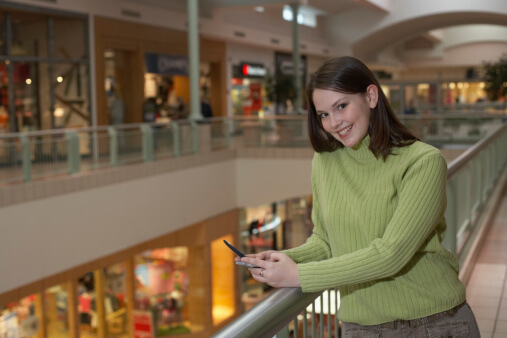Originally appeared on AllBusiness.com
By Rieva Lesonsky
Today’s retail customers have access to nearly unlimited shopping options, from brick-and-mortar stores to e-commerce websites they can access with a tap on their smartphones. In addition, the customized shopping experience delivered by Amazon has raised customer expectations for a personalized experience higher than ever. In this increasingly competitive retail environment, personalization has become the key to success.
Not only is personalization important to customers, it’s profitable for retailers. Companies that incorporate personalization into online commerce are projected to increase their revenues up to 15% by 2018, reports Gartner.
Fortunately, retailers have plenty of tools at their disposal to help them pinpoint consumers’ personal preferences and shopping habits, then deliver the curated offers, products, and shopping experiences people now expect.
We share four steps your small business can take to capture more shoppers with personalization:
Step 1: Map the customer journey.
How do your customers shop, browse, and buy? To target them effectively, you need data-driven insights into their behavior. Monitoring customer behavior helps you gain a “360 degree” view of the customer so you can provide the right products, offers, and assistance at every stage of the shopping journey.
Built-in integration between Microsoft Dynamics 365 and Adobe Marketing Cloud allows retailers to easily access the marketing history of individual customers using the CRM system. You can see what your customers do on your website, the mobile version of your site, and in your actual store, giving you the knowledge you need to personalize offers and outreach.
Step 2: Predict customer behavior.
Soon, you’ll be able to not only track and analyze past customer behaviors, but predict their future behaviors as well. Predictive targeting incorporates online and off-line behaviors, such as customers’ financial data and social media activities, to help retailers craft more effective marketing campaigns.
Microsoft and predictive analytics company Versium have integrated automated predictive targeting into Microsoft Dynamics 365. For example, you could use a profile of your highest-return existing customers to generate a list of new customers who are most likely to buy. This enables you to more narrowly target your marketing, which saves you money and improves ROI.
Step 3: Personalize the in-store experience.
The Internet of Things (IoT) enables retailers to customize offers like never before. Using location-based IoT technology, you can personalize information, deals, and more for customers in your store. Customers are twice as likely to redeem offers that are location-based.
Here are just a few examples of how you can use this technology:
- If a shopper has been browsing online for running shoes, you could push a special offer for running shoes to their smartphone when they get near your store.
- If they have a product in their shopping cart on your retail website, a beacon could direct them to that product’s location when they enter your store.
- If it’s about to start raining, you could send nearby shoppers a discount on umbrellas.
In addition to sending personalized offers to smartphones, IoT technology can trigger relevant messages to pop up on digital signage in your store. Using shelf sensors and beacons, digital signs can display promotions for products customers have recently searched on their phones, or show more information about a product when a customer picks it up from the shelf.
The Plexure Retail Personalization solution integrates Microsoft’s IoT-enabled CRM so you can merge in-store data with customer data from other sources, such as social media, online, and mobile use. You can even pull in data from outside sources, such as real-time weather and traffic, to further tailor your marketing messages.
Step 4: Provide personalized service.
Technology can help simplify shoppers’ lives, making them more satisfied and more loyal to your store. For instance, grocery store chain Macey’s uses Microsoft’s SKIP app to personalize promotions, simplify shopping, and eliminate long checkout lines. Shoppers create their own shopping lists on their smartphones. As they enter the store, the lists are organized by aisle. When customers place an item in the cart, they scan it with their phone and then check out on the phone using the SKIP app.
Customers who use SKIP increase their store visits and spend more, too. In addition, since fewer cashiers are needed for checkout, cashiers can spend their time helping customers on the floor, which makes for a more personalized in-store experience.
By taking advantage of technology, you can give your retail store the personal touch—which helps give it a competitive edge it needs in today’s tough retail marketplace.







